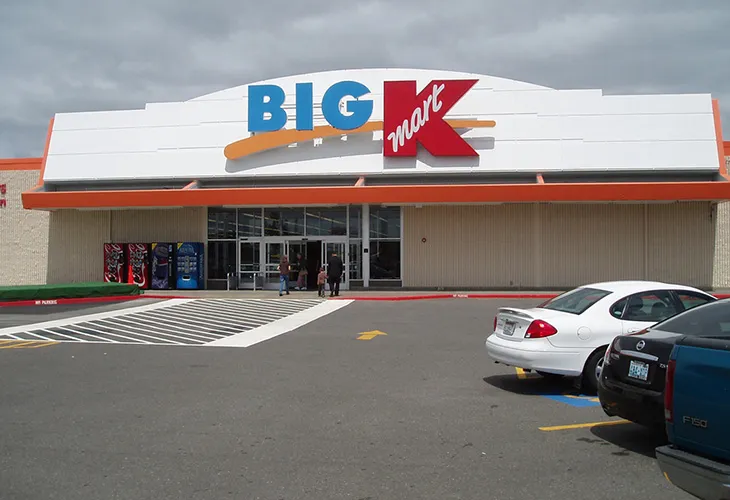As we relive American retailing history, which we occasionally do, we’re reminded that Kmart, once the largest general merchandise retailer in the United States, has dwindled a bit in size. The current store count for the former Troy, Mich., dynamo is … five.
 Five? That’s correct. In mid-January, Kmart’s holding company announced that it plans to close its store in Hamilton, Mont., a move that, when it occurs, will bring the Kmart store total down to … five.
Five? That’s correct. In mid-January, Kmart’s holding company announced that it plans to close its store in Hamilton, Mont., a move that, when it occurs, will bring the Kmart store total down to … five.
The tendency, as with all things past in retailing, is to ask once more what happened. That’s the tendency, but of course there are no answers. No simple ones, at any rate.
Many years ago, an acquaintance of ours asked his friend Joe Antonini, who happened to be Kmart’s CEO at the time, whether he or any of his minions were concerned about a fast-growing competitor in the South that was quickly opening stores under the name Walmart. “David,” he answered without pausing, “we have regional competition all over the country. Walmart is just one more competitor. Our people are certainly keeping on eye on the company. But we’re not unduly concerned.” Maybe he should have been.
But we can’t credit or blame Walmart for Kmart’s demise. Sam Walton, another friend of ours, who chanced to be Walmart’s CEO at about the same time, cared about one thing and one thing only: Walmart. At that retailer’s fabled Saturday Morning meetings, Walton repeatedly asked the attendees one critical question: “Do you think we’re good enough to …?
The question was usually posed in the form of a challenge: “Are we good enough to do $1 billion in sales?” “Are we good enough to compete in the northern states?” “Are we good enough to compete with Kmart?” The answer, as Sam well knew, was always yes.
But enough about Walmart. This little essay is about Kmart. There is little doubt that, at its zenith, Kmart was among the very best retailers this country ever produced. Its mistakes — and there were mistakes (sorry, Joe) — were vastly outnumbered by its successes. Expansion was the key byword — in store count, in geography, in store size, in the range of merchandise it decided to sell and customers happily agreed to buy.
When it fell apart, it fell apart slowly — but inexorably.
In 2002, 20 years ago, Kmart filed for bankruptcy. At that time, the retailer operated in some 2,100 locations. Two years later, when the retailer was acquired by Sears, a mass retailer that was to itself file for bankruptcy in 2018 (no surprise there), Kmart’s store count had declined to 1,400.
As for Sears, though it ultimately emerged from bankruptcy, it has since sold off such major brands as DieHard and Craftsman. By 2020, Sears’ revenue had sharply declined — from $53 billion in 2006 to $3 billion in 2020. Hardly the white knight Kmart so desperately needed.
But back to Kmart. Its missteps on the road to five stores (five?) can be accurately documented — if one had the time or the inclination. Retailing’s failures can always be pinpointed in retrospect. Well, nearly always.
At bottom, Kmart suffered from that most fatal of all viruses: a feeling of infallibility. So it was that the retailer never changed when change was called for while, conversely, rushing to change when change was not necessary — or even recommended.
As a result, the retailer tinkered with store size, with its merchandise assortments, with its price points, with its very identify. Finally, it ceased to represent the model that customers had readily embraced during its halcyon days: It ceased to be the retailer of choice for the American consumer.
If Kmart had remained a retail power, the inevitable question arises: Would it make the same mistakes again? Retail gurus would search in vain for an answer. The more valid question is this: How many U.S. retailers are in the marketplace today itching to make the same mistakes that Kmart so readily made a generation ago?






